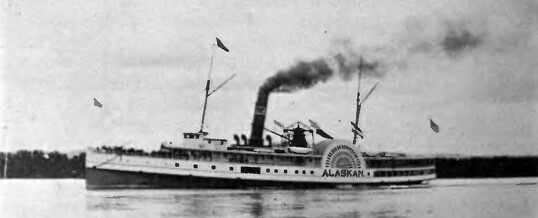
On May 12, 1918, the Olympic, sister ship to the ill-fated Titanic, intentionally ran down and sank a German submarine, becoming the only merchant vessel to sink a warship in World War I. There are really two questions for today: What is the truth behind the treasure in Mexican gold, silver and jewels that the SS Merida was reportedly carrying when she went to the bottom in 1912? And, was the Panamanian freighter Cocle carrying tons of Russian gold when she was torpedoed in 1942? If you are reading this in a post, go to http://shipwrecks.com/shipwrecks-of-may-12/ to learn more about the Cocle and some of the many shipwrecks that have occurred on this day over the centuries.
Today’s Shipwrecks™
May 12
compiled and edited by Dr. E. Lee Spence
1780: The American Continental Navy frigate Queen of France, 581 tons, Captain John Rathbun, was one of a number of vessels whose guns were removed before being scuttled in the Cooper River in South Carolina, between the Charleston peninsula and Shute’s Folly Island, to help block the channel and prevent them from falling into British hands in preparation for the city’s defense and ultimate surrender to the British on May 12, 1780. She was the former French ship La Brune, which had been purchased in France in 1777 by American commissioners, Benjamin Franklin and Silas Deane, and fitted out as a 28-gun frigate. Her armament included twenty-six 6-pounder guns. She was named for Marie Antoinette.
1780: With the fall of Charleston, South Carolina, on May 12, 1780, the British captured 49 ships and 120 boats of various kinds. The frigates Boston and Ranger were taken into British service, but most of the other vessels were scuttled.
1780: The British government transport (or storeship) Aeolus, two guns, ran agound opposite Haddrell’s Point at Mount Pleasant, South Carolina, during the British invasion of Charleston. The transport was variously reported as lost on April 8, 1780, and on May 12, 1780. The stranded vessel was attacked by Captain Thomas Gadsden with two field pieces and was so shot to pieces that her crew set her afire and abandoned her, after removing her equipment. The Aeolus was said to have been loaded with guns, ammunition, etc. Note: Charts prepared shortly after the Aeolus’ sinking show her as having wrecked near the east end of present day Crab Bank.
1781: HMS Thetis, 32 guns, was wrecked entering the careening area at Saint Lucia Bay on May 12, 1781. She was launched in 1773 and was of the fifth rate. (Note: Saint Lucia is an independent country and is one of the Windward Islands, in the eastern Caribbean Sea on the boundary with the Atlantic Ocean. It is part of the chain of islands known as the Lesser Antilles, and is located north/northeast of the island of Saint Vincent, northwest of Barbados and south of Martinique.)
The Thetis was launched in 1773 and was a frigate of the fifth rate. Fifth-rate ships served as fast scouts or independent cruisers and included a variety of gun arrangements. The fifth rates of the 1750s generally carried a main battery of twenty-six 12-pounders on the upper deck, with six 6-pounders on the quarterdeck and forecastle (a few carried extra 6-pounders on the quarterdeck) to give a total rating of 32-guns. Larger fifth rates introduced during the late 1770s carried a main battery of twenty-six or twenty-eight 18-pounders, also with smaller guns (6-pounders or 9-pounders) on the quarterdeck and forecastle. Tonnage ranged from 700 to 1450 tons, with crews of 215 to 294 men.
1802: On May 12, 1802, the British ship Union was run down and sunk by the Danish ship Friendship in the North Sea, 24 nautical miles off Vlieland, Batavian Republic. There were just three survivors. Note: Vlieland is one of the West Frisian Islands, lying in the Wadden Sea, and is part of the country of the Netherlands.
1806: The British ship Irvine was lost on May 12, 1806, off St. John’s, Newfoundland, with the loss of five of her crew.
1807: The British ship Liberty, bound from South Shields, Ireland, to Quebec, Canada, foundered on May 12, 1807, while crossing the Grand Banks of Newfoundland. Her crew was rescued by the Danish/Norwegian ship Prince Frederick.
1820: The Canadian schooner Liveley, bound from Antigua to Halifax, Nova Scotia, was lost near Cape Negro, Nova Scotia on May 12, 1820. Her crew was saved.
1820: The British brig William and Matthew, bound from London to St. John, New Brunswick, Canada, was wrecked on Cape Negro, Nova Scotia, with the loss of two lives.
1822: The Norwegian ship Haabet was wrecked on the Gunfleet Sand in the North Sea off the coast of Essex, United Kingdom.
1822: The British ship Hope foundered in the Irish Sea between the Smalls and the Tuskar Rock.
1822: The British ship Vine, bound from Newcastle upon Tyne, Northumberland, England to Caen, Calvados, France, was wrecked on May 12, 1822, on the Kentish Knock, in the North Sea off Margate, Kent, England. Her crew were rescued by the British ship Sir Godfrey Webster.
1825: On May 12, 1825, the British ship Molly, bound from Kilrush, County Clare, Ireland, to Liverpool, Lancashire, England, was wrecked off Ballywalter, County Antrim, Ireland.
1825: The Hamburg ship, Vrow Christina, bound from Hamburg to Hull, Yorkshire, England, was wrecked on Norderney, Kingdom of Hanover, on May 12, 1825. Her crew was saved.
1826: The British ship Nassau, bound from Ireland to Quebec City, Canada, was wrecked on Cape Sable Island, Nova Scotia, on May 12, 1826.
1831: The British ship Duke of York was wrecked at Madeira, Portugal, on May 12, 1831.
1831: On May 12, 1825, the armed British Cape Colony (South Africa) cutter George was wrecked on Dyer Island. Her crew was saved.
1832: The armed Jamaican cutter Charlotta was wrecked on the Ship Rock on May 12, 1832.
1832: The Russian ship Ingersburg Elizabeth, bound from Liepäja to Amsterdam, Holland, was wrecked on May 12, 1832, in the Vlie. Her crew was saved. Note: The Vlie or Vliestroom is the seaway between the Dutch islands of Vlieland, to its southwest, and Terschelling, to its northeast.
1832: The British ship Po, bound from London to Bristol, England, was wrecked near Ramsgate, England, on May 12, 1832. Her crew was saved.
1833: The British ship Hero, bound from Liverpool England to Newfoundland, Canada, was lost on the Grand Banks of Newfoundland on May 12, 1833.
1837: On May 12, 1837, the Dutch ship Vrow Margaretha, bound from Lisbon, Portugal to Rotterdam, South Holland, was wrecked on the Saintes, off the French coast.
1842: The Royal Mail Company’s steamer Dee, Captain Oman, reported “the total loss of the company’s steamer Medina, Commander Burney, on the morning of the 12th of May (1842), she having struck on a reef of rocks whilst entering Turk’s Island, on her outward route (i.e. London to Jamaica). The crew and passengers were fortunately saved. Among the latter were his excellency the Earl of Elgin, the late newly appointed Governor of Jamaica, his lady, and suite, who made their escape from the wreck with his lordship’s dispatches only.” A letter from the passengers stated in part: “It must be a source of gratification to you and your officers, that by your united exertions this calamity has been attended with no loss of life, and that so much valuable property has been saved.” Among those signing were Lord Elgin, Commodore Henry Dilkes Byng, and Consul-General Joseph J. Crawford.
Another account added “She was driven by the current on an adjacent reef. Every effort to save her was fruitless ••• the rocks had pierced her bottom” and she became a total wreck. Everything moveable was conveyed to safety, “as also the quicksilver (mercury) she had on freight, together with much of the portable machinery as could be detached.” [Note by ELS: Mail steamers almost always carried some money, usually in the form of specie (coins), in the mails, which would have been locked up for security. However, that added security also meant that the mails, and any specie, were difficult to access and save in an emergency. The fact that it is not mentioned raises the possibility that it was lost, as loses were often played down by the owners.]
One of the passengers aboard the Medina was “the young, the amiable, and the accomplished Countess of Elgin — the lady” of the Earl of Elgin, Governor of Jamaica. The countess was just 22, and died only a few months after her arrival in Jamaica, as the result of pre-mature childbirth, that was partly attributed to the countess’ agitated state, first from being shipwrecked, and subsequently from earthquakes that rocked the island. The bodies of the countess and her child were “consigned to a vault in the Cathedral Church of St. Catherine.”
The Medina was built by Messrs. T. and J. White, of Cowes. She was 1,800 tons burden. She was a new ship and was described as “the finest of the West India Royal Mail fleet as well as one of the most complete team ships afloat.”
1844: The Spanish brig Ernesto, Captain Sibils, bound from Marseilles for New Orleans, via Barcelona, was wrecked on the southern coast of Inagua the night of May 12, 1844.
1853: The British schooner William and Mary collided with the sloop Lily and foundered on May 12, 1853, in the North Sea off Lowestoft, Suffolk. Two of her crew of four were lost.
1858: Peter Wilson, a fisherman, was drowned when his schooner capsized near Warsaw Island, Georgia, on May 12, 1858. His body was found entangled with his schooner’s anchor.
1863: On May 12, 1863, the United States steamers Monticello and Conemaugh shelled five schooners while they were aground in Murrell’s Inlet, South Carolina, setting one on fire and damaging the others.
1864: A large flat, used for transporting grain, was destroyed at Simmond’s Mill, Alligator River, North Carolina, on May 12, 1864, by an expedition from the U.S.S. Ceres. The mill was also destroyed because the Yankees believed that the mill had “been engaged in grinding corn for the rebels.”
1869: The British steam clipper ship Carnatic ran on the Sha`b Abu Nuhas near Shadwan Island in the mouth of the Gulf of Suez, in the Red Sea, on May 12, 1869. Incorrectly believing his ship could be kept pumped out until help arrived, Captain P. B. Jones denied repeated passengers requests to abandon ship, and reassured them that the P&O Liner Sumatra was due to pass by and would rescue them. There was a general air of calm and normality on board until eventually at 2 a.m. on the 14th, the rising water engulfed the ships boilers and the ship was left without power or light. At 11 a.m. the following morning, after 34 hours on the reef, Captain Jones had just given the order to abandon ship and the first four passengers had taken their seats in one of the lifeboats when Carnatic suddenly broke in half. Thirty-one people drowned. The survivors made it to barren Shadwan, where they were rescued the next day by a passing ship, Sumatra. There was £40,000 in gold (well in excess of £2,500,000 today, just in the bullion value), so the wreck was the subject of an immediate salvage operation. All the gold was reported recovered, but persistent rumours of remaining treasure has added to the lure of this wreck, which was rediscovered in May of 1984. The wreck is now a popular scuba diving site.
She was 293 feet 4 inches in length, 38 feet 1 inch in breadth and 25 feet 7 inches in depth of hold. She was a full-rigged ship with a single screw, propelled by a Humphrys, Tennant and Dykes 4-cylinder compound inverted steam engine of 2,442 hp. In addition to a large crew, she could carry up to 250 passengers.
1870: The schooner Thomas Miskimmons, Captain Lewis, 110 tons, bound from Charleston, with a cargo of lumber and empty hogsheads (large barrels), struck on a reef near Man-of-War Cay, Abaco, on May 12, 1870. Part of the cargo was saved and landed at Abaco. Her materials were taken to Nassau. (Note: A ship’s materials included things like spars and rigging.)
1878: The British schooner Gipsey struck rocks and sank in the River Avon at Bristol, England, on May 12, 1878. During salvage efforts, the Gipsey’s hull broke in two, blocking the river for at least five days, and it had to be blown up to clear the channel.
1889: The American schooner rigged, sidewheel steamer Alaskan, 1718 tons, foundered in a storm in the Pacific Ocean off Cape Blanco, Oregon, USA, on May 12, 1889.
The Alaskan, Captain R.E. Howes, with 34 persons on board, had left Puget Sound in ballast—meaning she was carrying no freight, sailing around the Olympic Peninsula, then up the Columbia and Willamette rivers to Portland, Oregon. She then ran back down the Columbia, crossed over the Columbia Bar at 11:30 a.m. on Saturday, May 11, 1889, then turned south for San Francisco, California. She ran all night at 9 knots, keeping about 18 miles off the coast. At 11:00 p.m. she passed the Yaquina Head Lighthouse then running about 14 miles off shore. Weather conditions were good: light wind and rain showers, and the barometer holding steady. But, by Sunday morning, the wind and wave height had increased. The ship was now 18 miles offshore at 43.5°N 124.6°W and laboring heavily through the rolling waves. Although the Alaskan had an iron hull and was 276 feet in length with a breadth of 39 feet 6 inches and looked big and strong, especially with three decks, she had been built by John Roache & Sons in 1883 as an inland steamer for the Atlantic coast and had never been intended to run as an ocean vessel in the Pacific. To make matters worse, she had been largely worn out by hard driving, first on the Coast of Alaska, and then in the Columbia River. By 3:00 p.m. on May 12, 1889, the Alaskan was in serious trouble off Cape Blanco. Her sidewheels rotated at “dead slow” and green water came in over the bow. The ship could not maintain direction, as a wave would lift one side and its paddle out of the water, then another, so that little or no forward progress could be made. The after-cabin worked loose as the securing bolts pulled through the planking. Second Officer Weeks with the help of the crew tried to shove blankets and ticking into the holes to stop the leaks, but the vessel still kept shipping additional tons of water. The ship continued to gradually come apart under the stress. Her iron hull was not breached but her wooden upper works were being ripped apart and carried away by the waves. By 6:00 p.m. her condition became irretrievable when the port side paddle box tore away, leaving numerous holes in the hull. The water rose in the hold faster than the pumps could work. By midnight, the boiler fire was extinguished and Alaskan lost all power save for an emergency sail rigged earlier to keep her steadier in the wind.
Captain Howes ordered the ship’s boats to be launched and towed behind the vessel on a line. Three of the four boats were successfully launched this way, and most of the crew were successfully evacuated, save only five men: Captain Howes, the chief engineer, the second mate, steward Al Rahles, and seaman Denny. As the boats were being launched, the crew saw a light from another ship, and desperately launched two distress rockets to ask for assistance. As the evacuation was going on, a wave broke over the deck and sucked Quartermaster Shielderup, who had been steering the ship, into the now-exposed side wheel where he was horribly mangled. At about 1:00 a.m. on Monday morning, the ship seemed to be going down so they cut the line to the boats. There was then no way off the Alaskan for the five men left on board. The ship stayed afloat for about another hour and a half. Captain Howes and chief engineer Swain ended up clinging to a fragment of the deck. The pilot house floated by, with three men hanging on to it. Against the captain’s advice, the chief struck out swimming for them, but never made it and was not seen again.
1904: On May 12, 1904, during the Russo-Japanese War, the Imperial Japanese Navy torpedo boat No. 48 struck a mine and sank in Kerr Bay with the loss of seven of her crew.
1912: The American, Ward Line line steamer Merida was in collision in dense fog with fruit steamship Admiral Farragut and sank off Cape Charles, Virginia with the loss of $2,000,000 of Mexican gold, silver, copper and jewels. All 319 people were saved, with only one serious injury. The wreck of the Merida is in 210 feet of water approximately 55 nautical miles from Cape Charles, Virginia. In 1924, the wreck was rediscovered. The treasure-hunting organization Gulfstream Ventures secured legal control over the wreck site in 2013. Note by ELS: There exist many rumors and questions and about how much treasure she actually carried with some saying she carried Mexico’s crown jewels. Newspaper articles, published years after the sinking, claimed the passenger list included some of the richest Mexicans and told of the riches they allegedly lost. I don’t know if those accounts were true, but, years ago I saw insurance records, which confirmed the existence of a shipment of tons of silver, so I don’t doubt that. I am just not sure what else she carried.
The Merida was built in 1906 by William Cramp & Sons Shipbuilding Company in Philadelphia, Pennsylvania. She was 6,207 tons, 400 feet in length, 50 feet in breadth, with a draft of 17 feet. She was powered by two reciprocating steam engines, and could make 17 knots.
1918: On May 12, 1918, just as the German submarine U-103, commanded by Claus Rücker, was readying her stern torpedoes to fire them at RMS Olympic, she was spotted by Olympic’s lookouts. The Olympic’s gunners immediately opened fire on her and the huge steamer turned to try to ram the sub. U-103 prepared to crash dive and turned to a parallel course, but before she could descend far enough she was run over just aft of her conning tower. The steamer’s port propeller sliced through U-103‘s pressure hull. The sub’s crew blew her ballast tanks and scuttled and abandoned her in latitude 49°16′ north, longitude 4°51’ west. Olympic, which was bound for France with American troops, was the sister ship of the Titanic, did not stop to pick up the survivors, but continued on to Cherbourg, France. Not picking up survivors was probably due to a fear that more German submarines might have been in the immediate area and a rescue would have endangered the lives of her crew and passengers.
USS Davis later sighted a distress flare and took on board 31 survivors from U-103, nine lives having been lost. This was the only known sinking of a warship by a merchant vessel during the First World War.
U-103 was a Mittel type U-boat built by AG Weser at Bremen, Germany in 1816-17. She was 808 tons, and about 232 feet in overall length and 20 feet 8 inches in overall breadth. She was armed with 16 torpedoes, that could be fired from four tubes in her bow and two in her stern. She had a 105mm deck gun and an 88 mm deck gun.
1940: The British cargo ship Roek was sunk on May 12, 1942, after striking a mine in latitude 51°54′ north, longitude 04°21′ east. Some of the steamer’s cargo was salvaged by the Germans and sold at a prize court on November 13, 1942.
The Roek was built at Troon, Scotland in 1925 by Ailsa Shipbuilding Company Ltd. She had a single screw, was 1,041 tons, and about 246 feet in length and 35 feet in breadth.
1942: The Panamanian freighter Cocle, bound from the Tyne via Loche Ewe, Scotland for New York city with a general cargo, was torpedoed and sunk in the North Atlantic by the German submarine U-94 on May 12, 1942, in latitude 52°37′ north, longitude 29°13′ west. Four of her crew of 42 men died. (Note by ELS: Loche Ewe was a major transshipping point for bullion movements throughout World War II and, based on the timing, the Cocle may have been carrying a large quantity of Russian gold.)
A steamer, she was built by Western Pipe & Steel Co., at San Francisco in 1920 as the West Cahokia, her name was changed to Pacific Fir in 1926, then to Jacob Ruppert in 1938, and finally to Cocle in 1941. She was 5,645 gross tons, 3,500 net tons, 410.5 feet in length, 54 feet in breadth, and 21.7 feet in depth of hull. She had a single triple expansion, compound, steam engine of 2,800 indicated horsepower, with 3 boilers and a single screw.
1943: The German submarine U-89 was sunk by a combination of torpedo bomber biplanes from the British escort carrier HMS Biter, the British destroyer HMS Broadway and the frigate Lagan. U-89 was sunk at latitude 46°30′ north, longitude 25°40′ west. Forty-eight men went down with the U-boat; there were no survivors.
• • •
NOTE: This is by no means meant to be a complete list of the vessels lost on May 12, as there have been thousands of ships lost for every day of the year. All of the above entries have been edited (shortened) and come from various editions of Spence’s List™. The original lists usually give additional data and sources. Those lists are being updated and are or will be made available for a fee elsewhere on this site.
Click here to check out Dr. E. Lee Spence’s Facebook page on shipwrecks and treasure.
© 2013, 2017 by Dr. E. Lee Spence for composition, content and compilation.
Share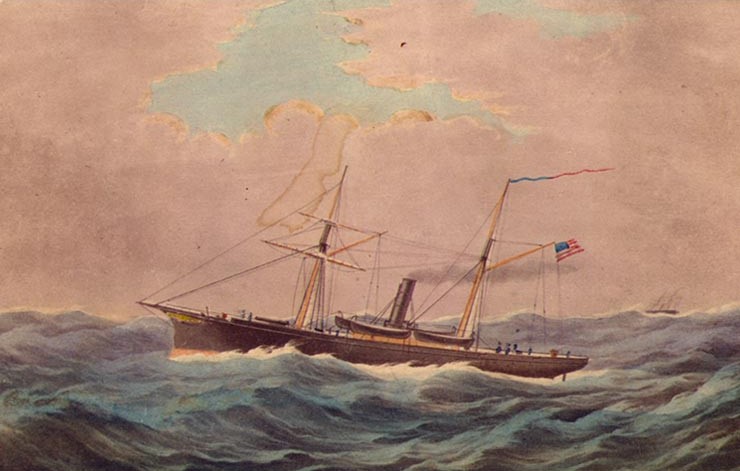
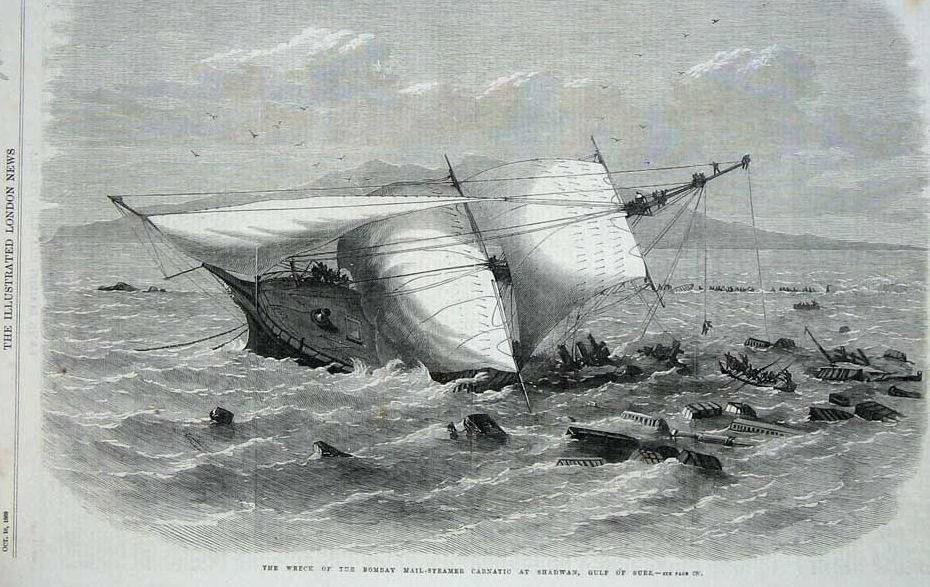
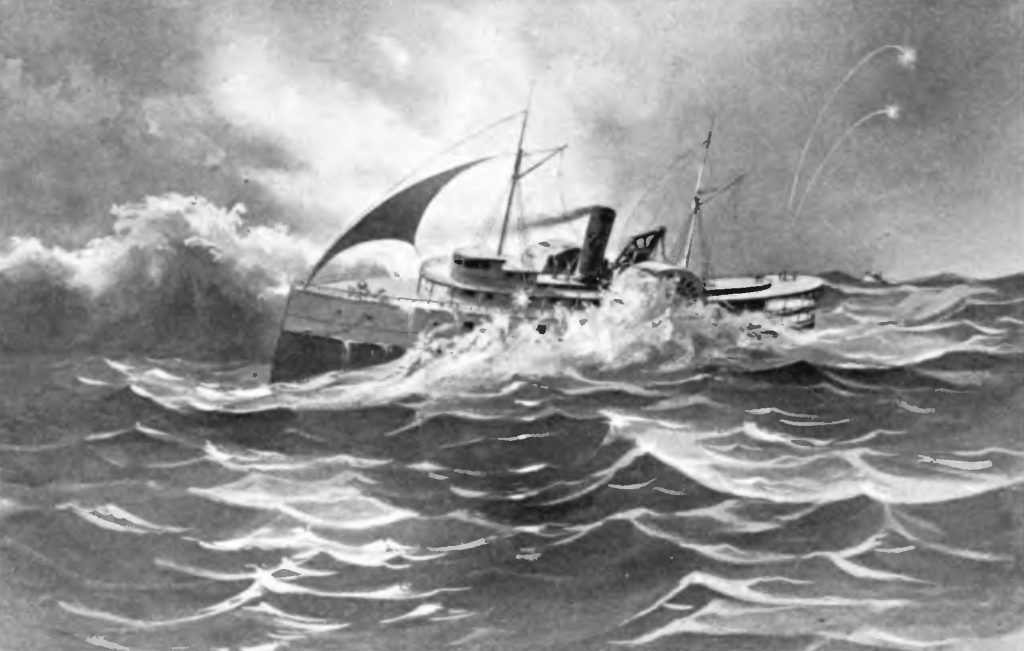
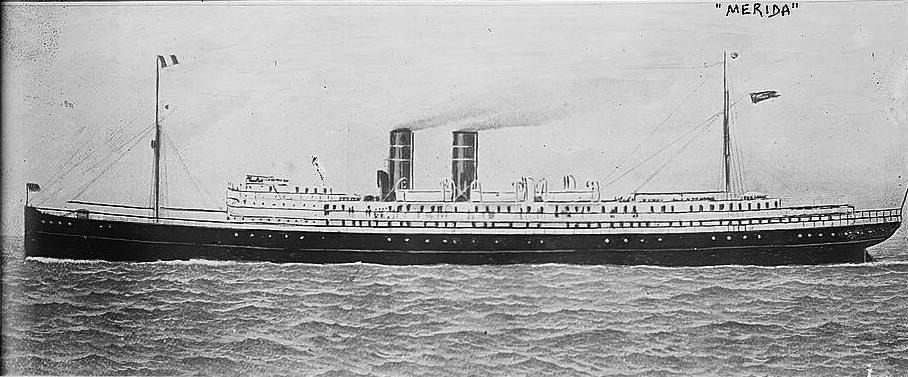
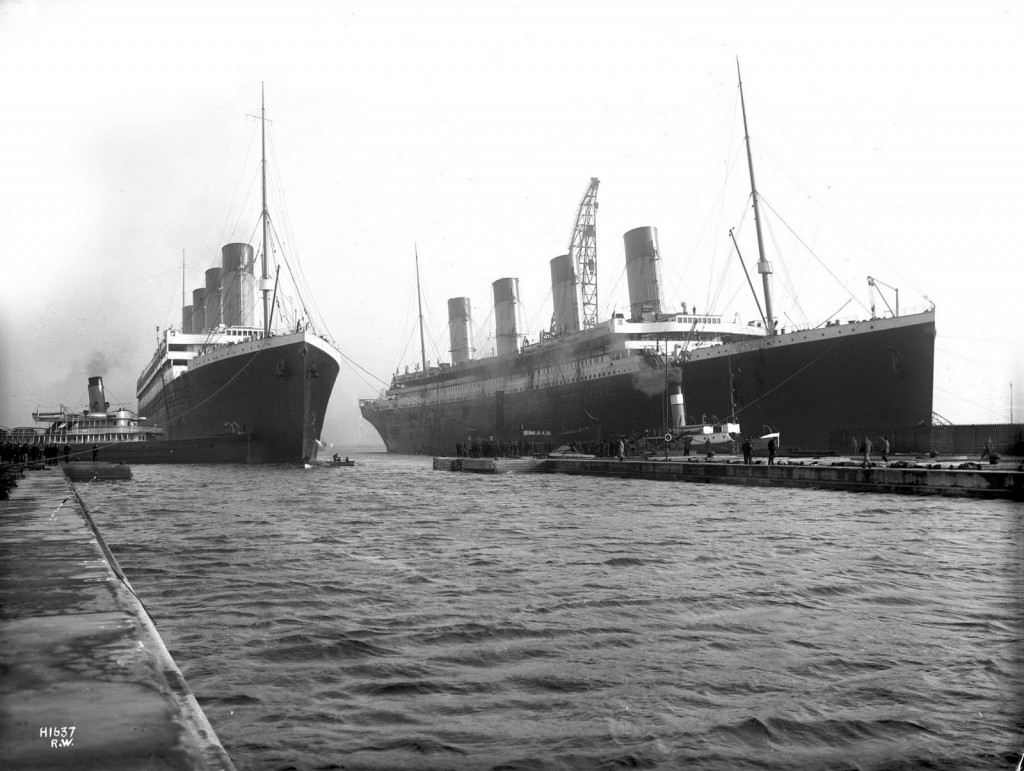
I’m impressed. Great job.